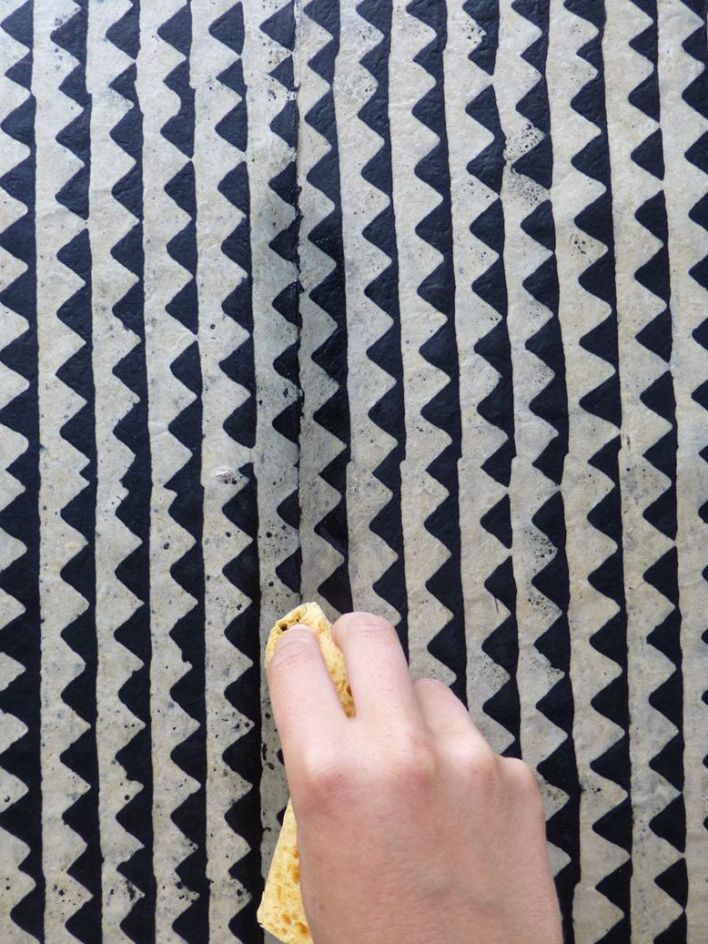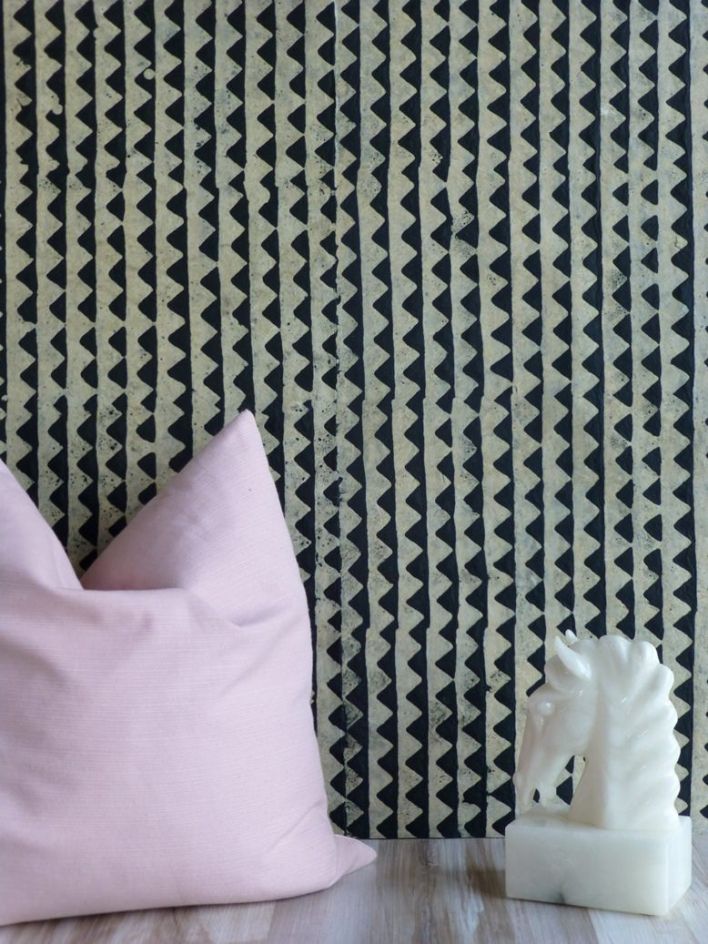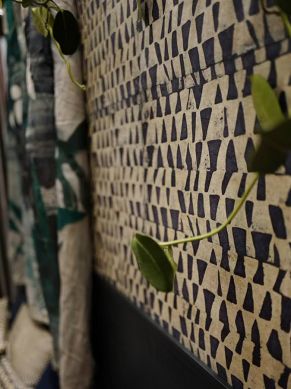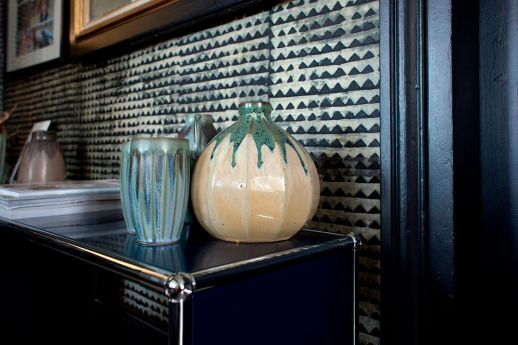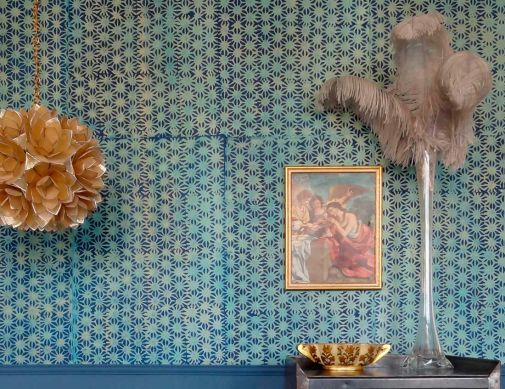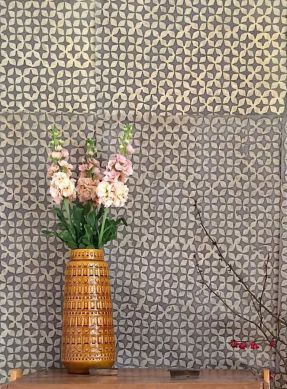We are delighted to welcome a new label famous for exclusive and unusual designs to the fold: Le Monde Sauvage. This is not a typical wallpaper manufacturer: Beatrice Laval - chief designer of this French enterprise - is determined to create a totally new approach to wall décor with her fantastic designs. Her printed sheets of paper provide the opportunity for a huge array of creative arrangements for walls.
About the Label and the Designer
Le Monde Sauvage was founded in Paris in 1970 as a family business and has since established itself as a specialist in high-quality home textiles and decorative objects. Many boutiques in the vibrant metropolis that is Paris sell products representing the "Wild World" of this long established company. The artistic director and creative head behind the enterprise is Béatrice Laval. Inspired by her extensive travels, her designs show influences from all over the globe and reflect a distinctly free-spirited, untamed and autonomous line. They are reminiscent of traditional ethnic patterns from Mexico, India and Africa. Nevertheless, they proffer their very own special charisma and charm based on modern graphic interpretations, enchanting colours and a refined patina look.
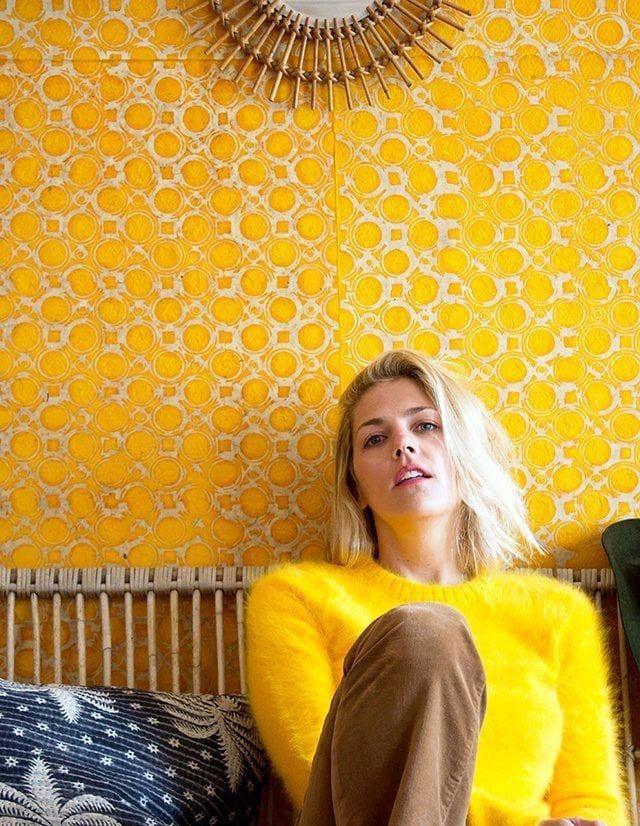
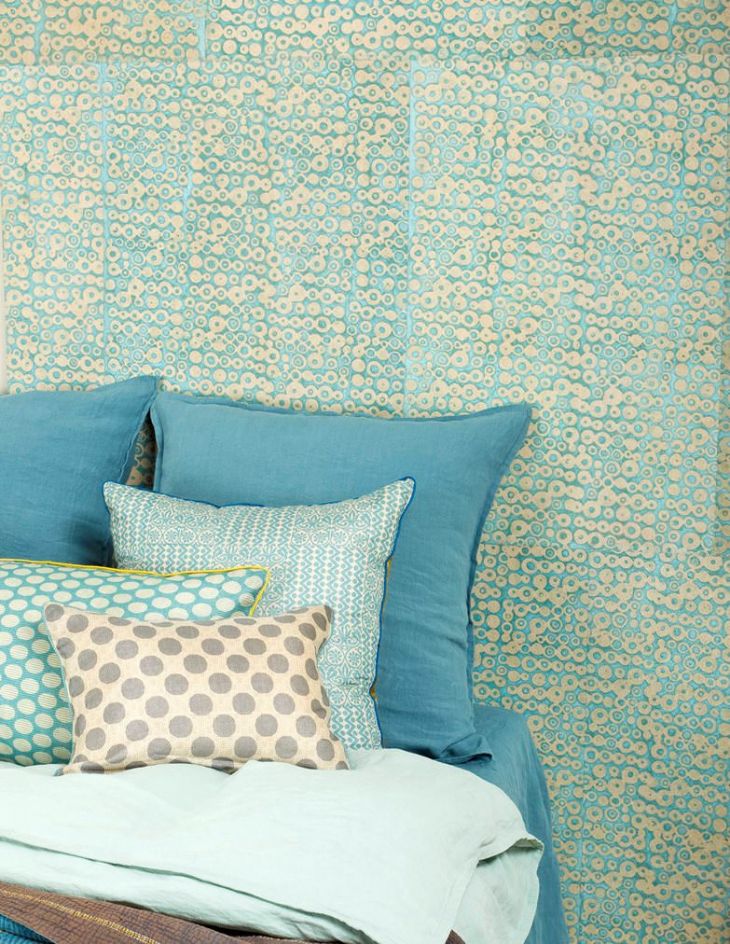
This conscious melange of different elements characterises the free spirit of the Le Monde Sauvage label. The pieces - be they home textiles, accessories or wallpapers - are all suitable as stand-alone elements or in combination. They remind us of a globetrotter's treasures, brought home from all over the world to represent their cosmopolitan attitude within their homes.
Each sheet is made from the finest paper. A wax layer is then manually printed on with special wooden blocks to create the patterns. Next, paint is applied to the patterns. Due to the wax treatment, some areas will not absorb the paint, leaving beautiful shapes and forms. Now, the wax layer is removed. This colouring technique is called batik and originated in Indonesia.
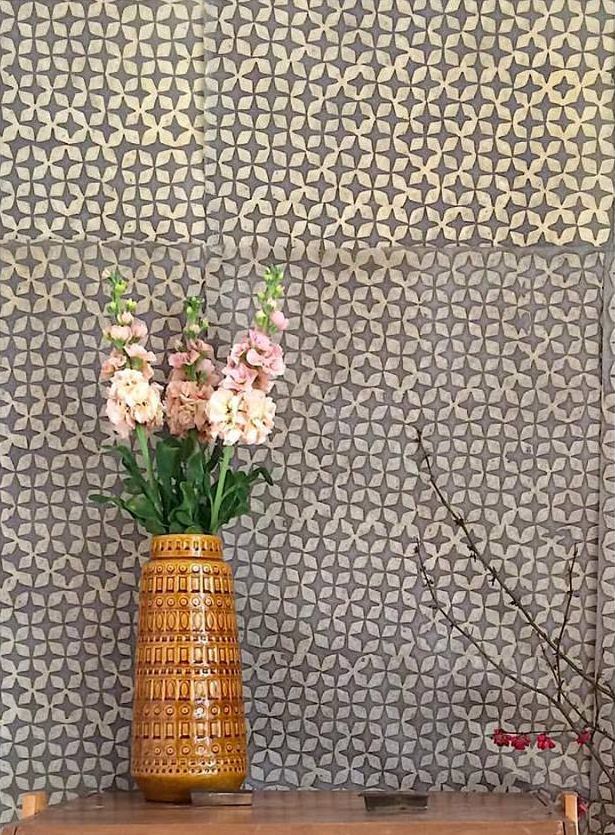

The structures of the immensely decorative sheets are optically and haptically extremely different from non-woven or paper-based wallpapers and their various surface materials. Anyone interested in exceptional wall decoration should note the following tips and features:
- Paints can "bleed", which is why protective gloves are usually worn when applying the sheets; wallpaper paste or humidity can also damage to the surface.
- Sunlight can cause discolouration, i.e. the light-resistant qualities of the sheets cannot be compared to those of industrially manufactured wallpapers. But due to the special Shabby Chic characteristics, subtle fading in places can actually emphasise the visual appeal.
- The sheets are not washable or scrub-resistant, i.e. they cannot be cleaned with a damp cloth, for instance.
- For these reasons, the wall sheets are not suitable for wet rooms (bathrooms/kitchens).
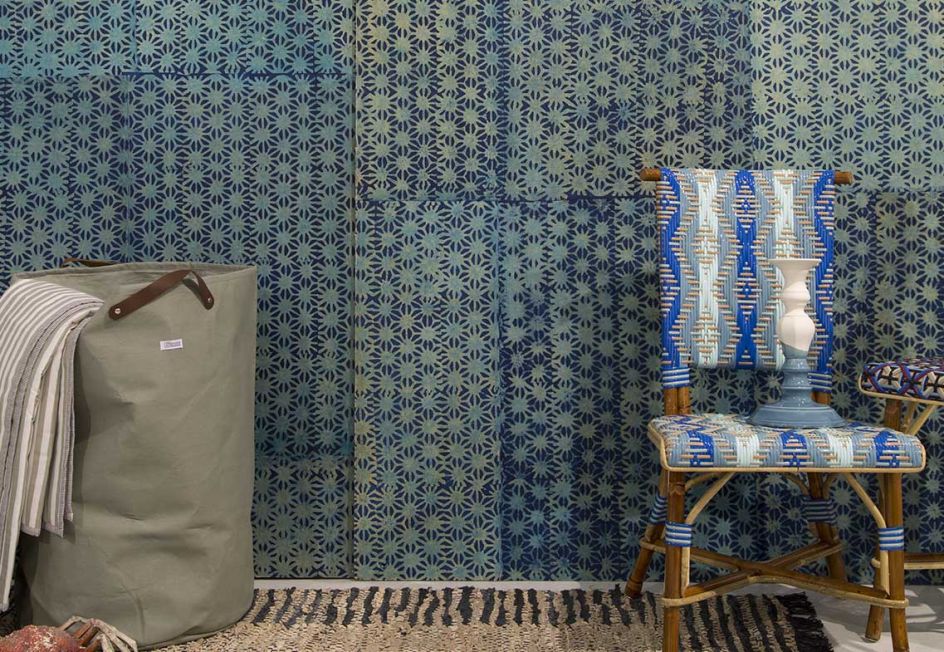
Material, printing process and characteristics of the design sheets
These lovingly printed wall sheets obviously do not come in the "typical" wallpaper format, i.e. in rolls. Their quality and features, too, differ significantly from normal wallpaper. These handmade sheets of waxed paper are characterised by their delicate transparency. Each sheet is unique and created using a complex printing process. This means that edges, prints and colours are charmingly irregular. For large-scale wallpapering projects, we recommend ordering the entire amount required in one batch so that you get similar individual sheets, all manufactured on the same production date.
Pattern images providing extremely varied design options
If you come across an entire wall adorned with the gorgeous printed wall sheets by Le Monde Sauvage, you might at first fall for the optical illusion that this is wallpaper in the traditional roll format, and the pattern is determined by squares or rectangular shapes. In fact, these are all individual sheets, each about 50 x 70 cm. One set contains 12 sheets of this size and will cover an area of about 4 square meters on the wall. The most interesting feature of this wall décor is that the sheets can be applied to the wall in any desired order or arrangement without having to worry about overlaps or rapport. You can simply let your imagination run free and arrange them however you wish. The sheets are perfect for a feature wall or specific areas, but they can also be used for all four walls or large surfaces.
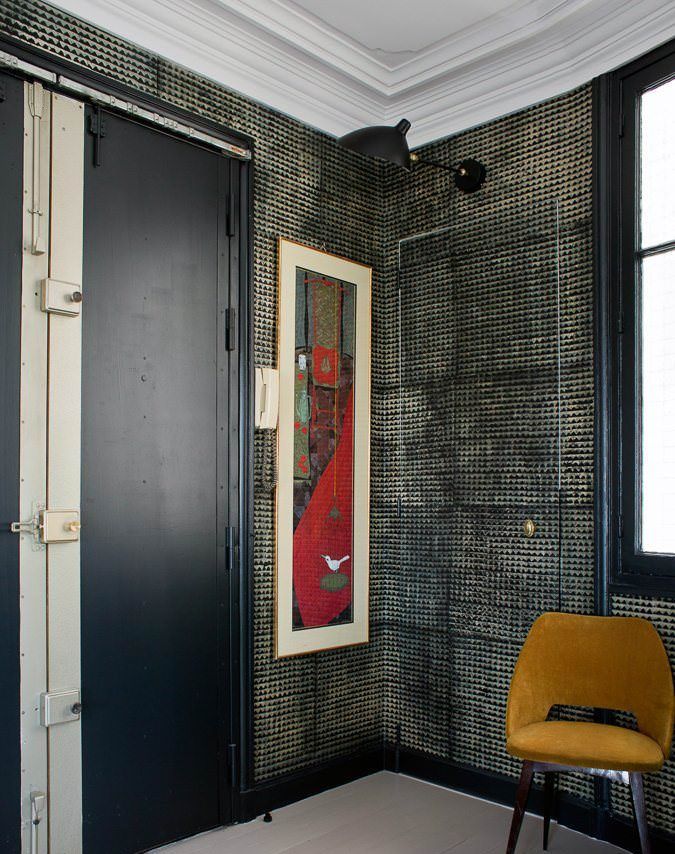
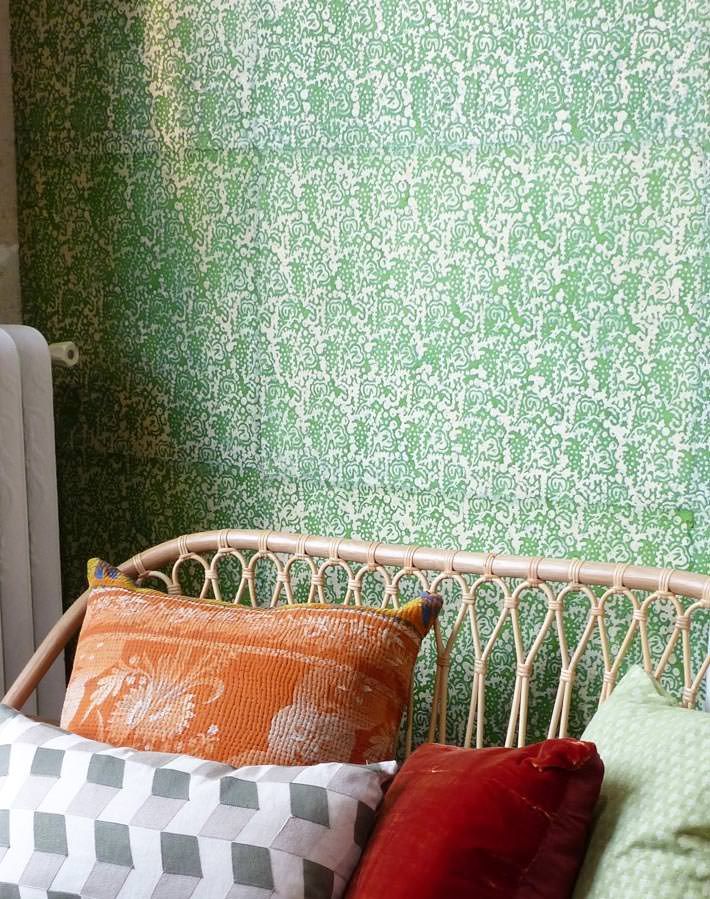
How to hang the wallpaper sheets
Before hanging your lovely sheets, you should start by arranging them on a clean surface (the floor or a table) to get a sense of how they will look once they are up on the wall.
When it comes to wallpapering with the printed sheets, the same general rules as for "regular" wallpaper apply: The surface has to be clean, dry, smooth, even and absorbent. Prepare your surface according to our wallpapering instructions How to prepare the wallpapering surface. Due the to partially transparent nature of the waxed paper, we recommend preparing the surface by applying the desired colour first. Otherwise the old paint job might be seen through the transparent parts of the new wall treatment.
What you need to put the sheets up on the wall:
- Wallpaper paste for paper-based wallpapers
- Bucket to mix the paste
- Water level (or plumb line)
- Tape measure
- Pencil
- Pasting brush
- Pressure roller (or wallpapering brush)
- Wallpapering spatula
- Cutter knife
- Sponge (if needed)
- Whether you apply the sheets over a large surface or just cover small but eye-catching areas: First draw a straight vertical line as a starting point for the sheets. Use the water level or plumb line to achieve this (see our instructions How to hang paper-based wallpapers). If you are planning to just cover a specific area with your printed sheets (for instance half way up the wall), you also need to draw a horizontal line (again, using the water level or plumb line).
- Hold the sheet loosely against the wall, position it along the drawn line and mark the spot where you will put the sheet (see next step).

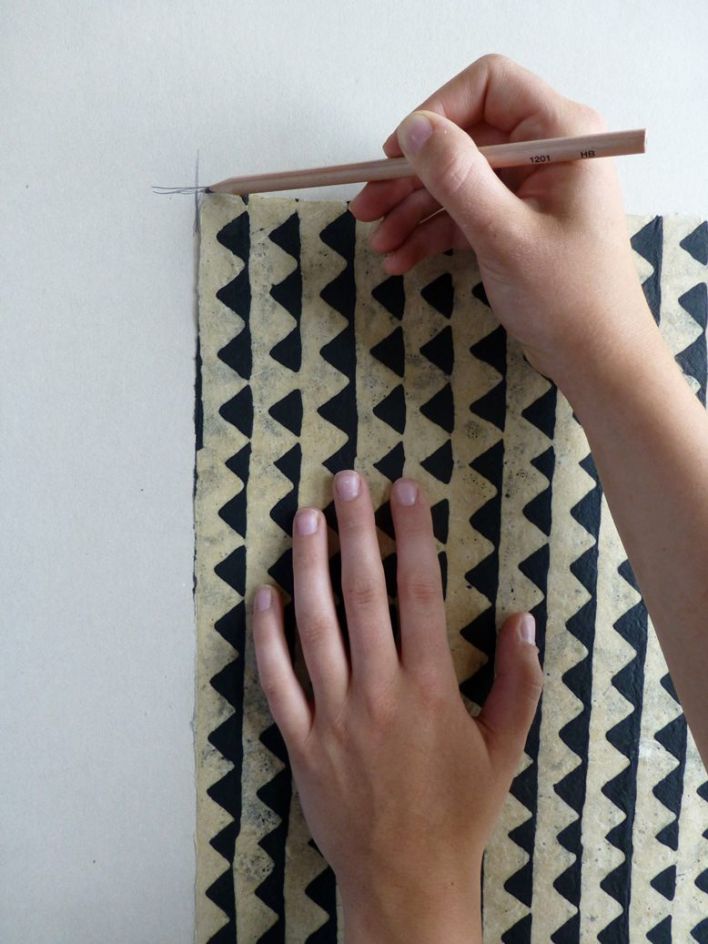
- Mix the wallpaper paste according to the instructions on the packaging and observe the soaking time to let the paste develop.
- Now apply the paste to the back of your sheet (where the print is usually more irregular or with less "clean" lines). In contrast to other paper-based wallpapers, there is no soaking time, as the wax-based manufacturing process means that the paper absorbs very little liquid.
- Put the first sheet up along the marked spot on the wall and carefully use your roller or brush to fix it in place. Always move from the middle to the edge. Remove any surplus paste immediately with a damp cloth or sponge.


- If you can feel an air bubble, gently move it towards the edge with the wallpapering brush or spatula.
- When applying additional sheets horizontally or vertically, you can place them next to each other or in a slightly overlapping manner. Due to the manufacturing process, the edges of the sheets are slightly uneven, so a slight overlap might be more appropriate.
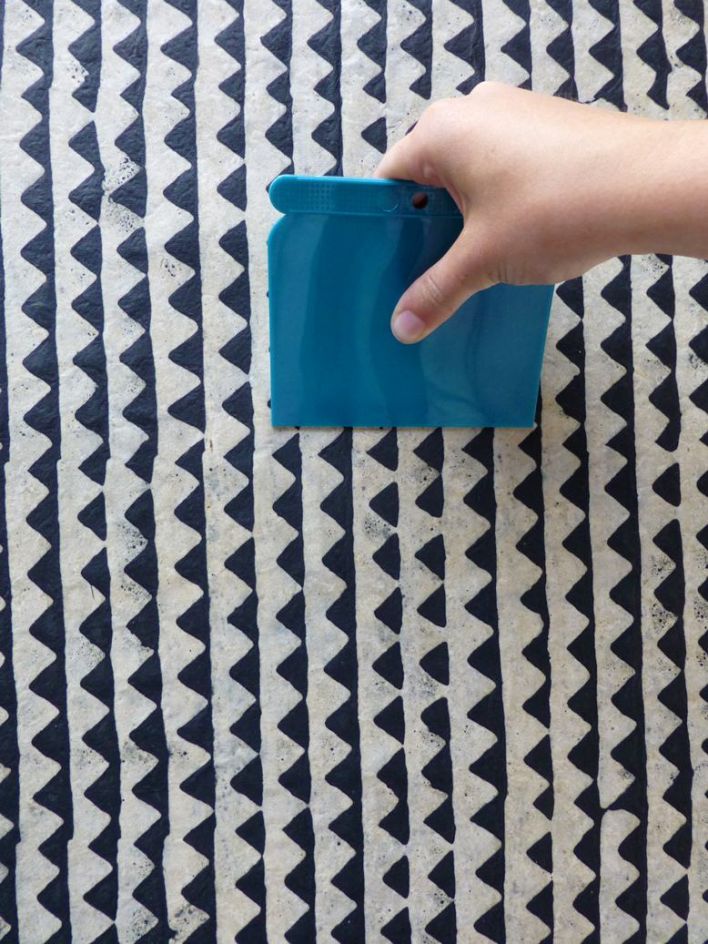
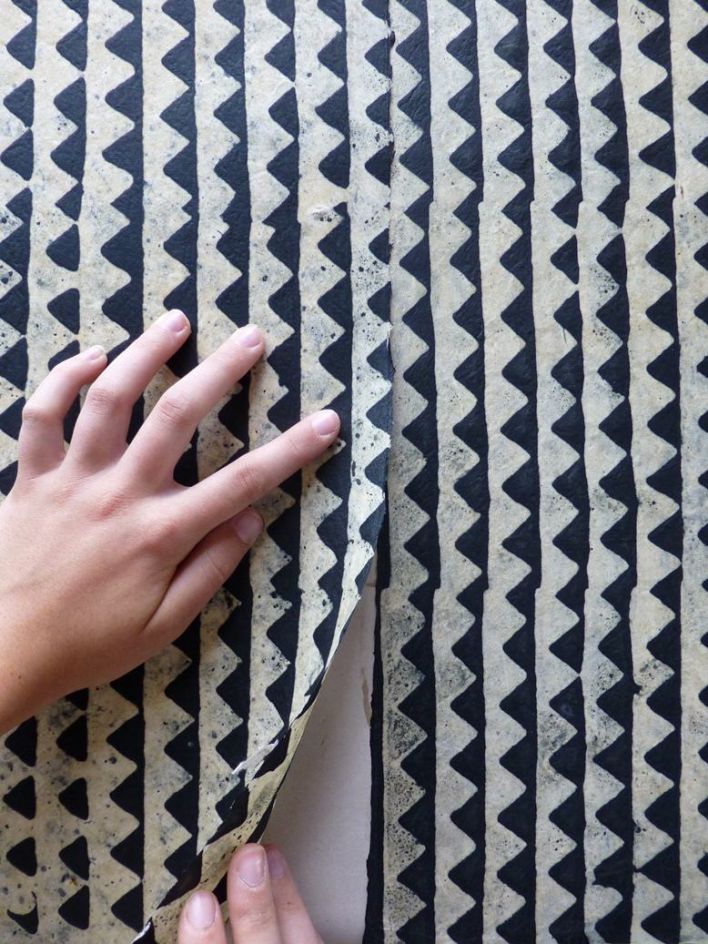
- If you hang the individual sheets edge-to-edge, you can create a more smooth and unified surface by gently moving a sponge over the borders. This will spread the paint slightly and even out the edges.
- Excess paper at walls or at the horizontal starting line can be removed with your cutter knife.
